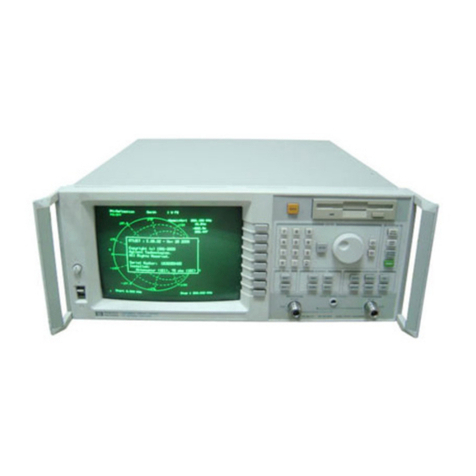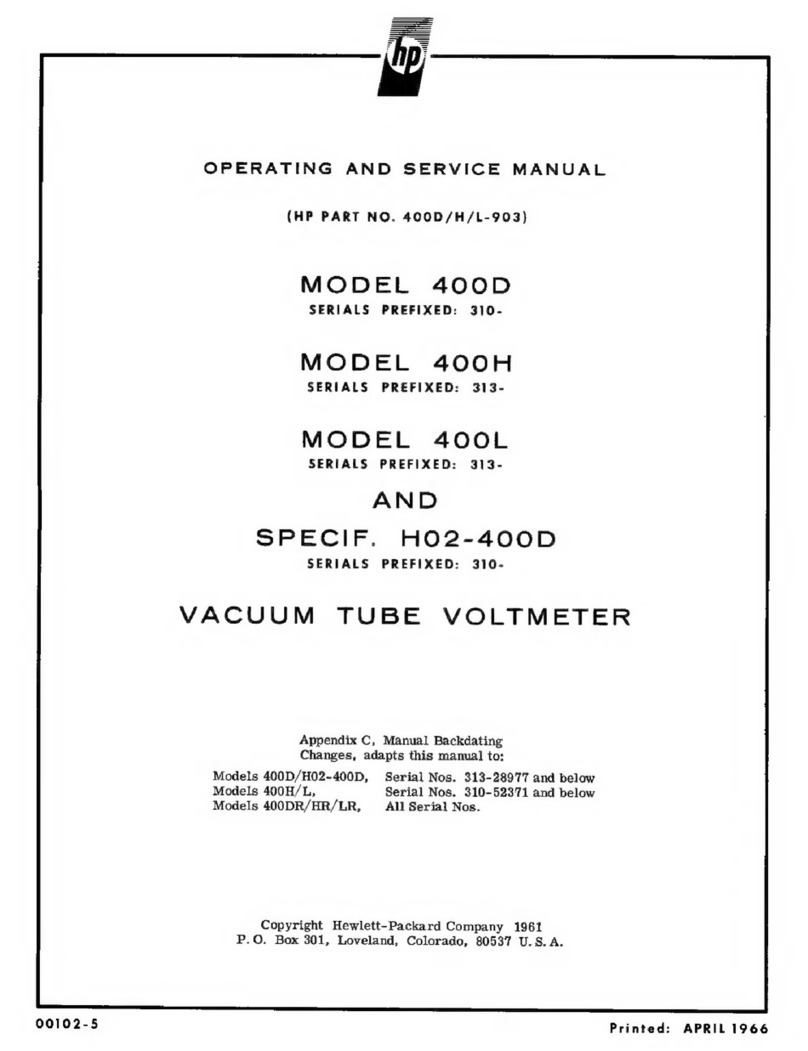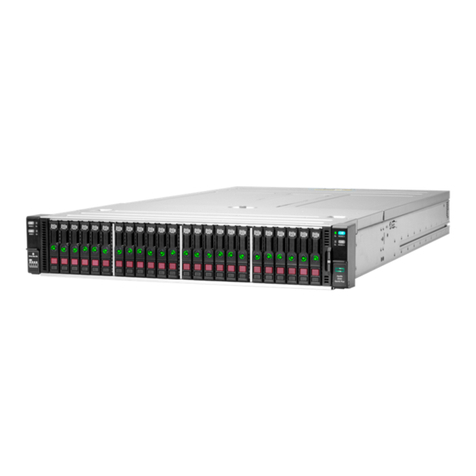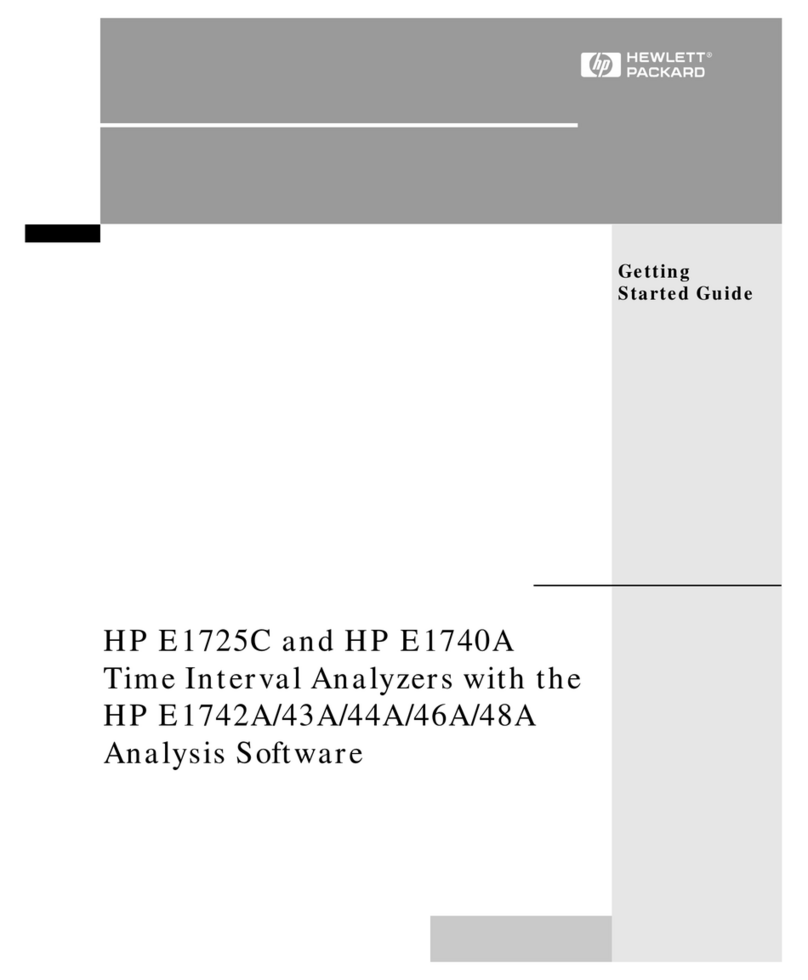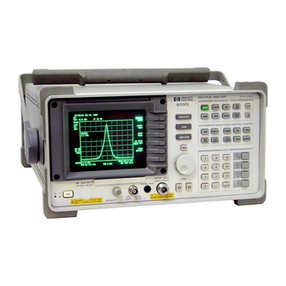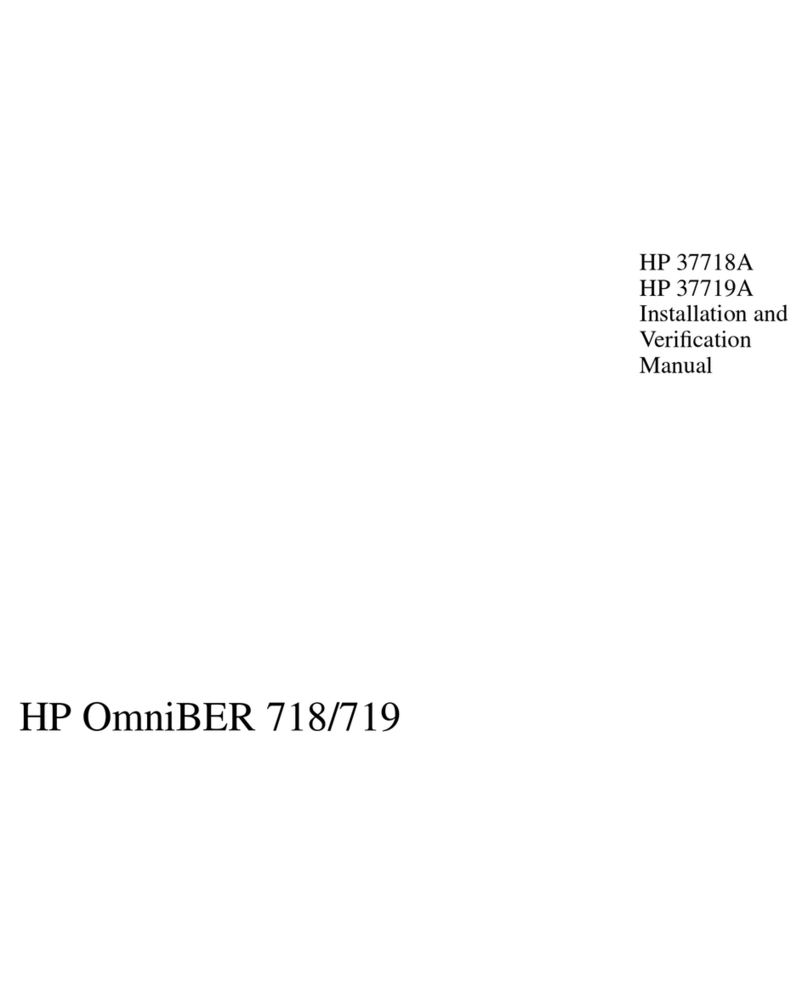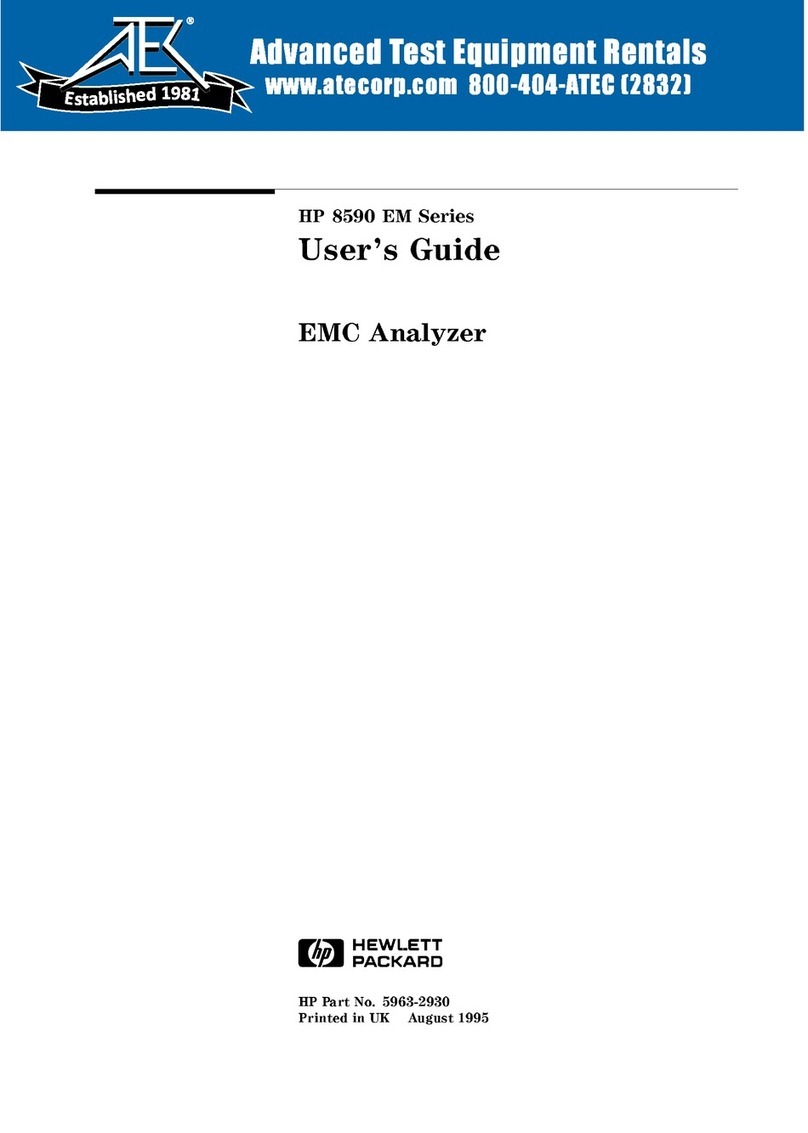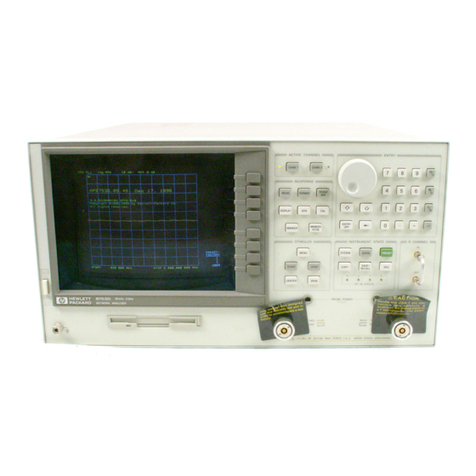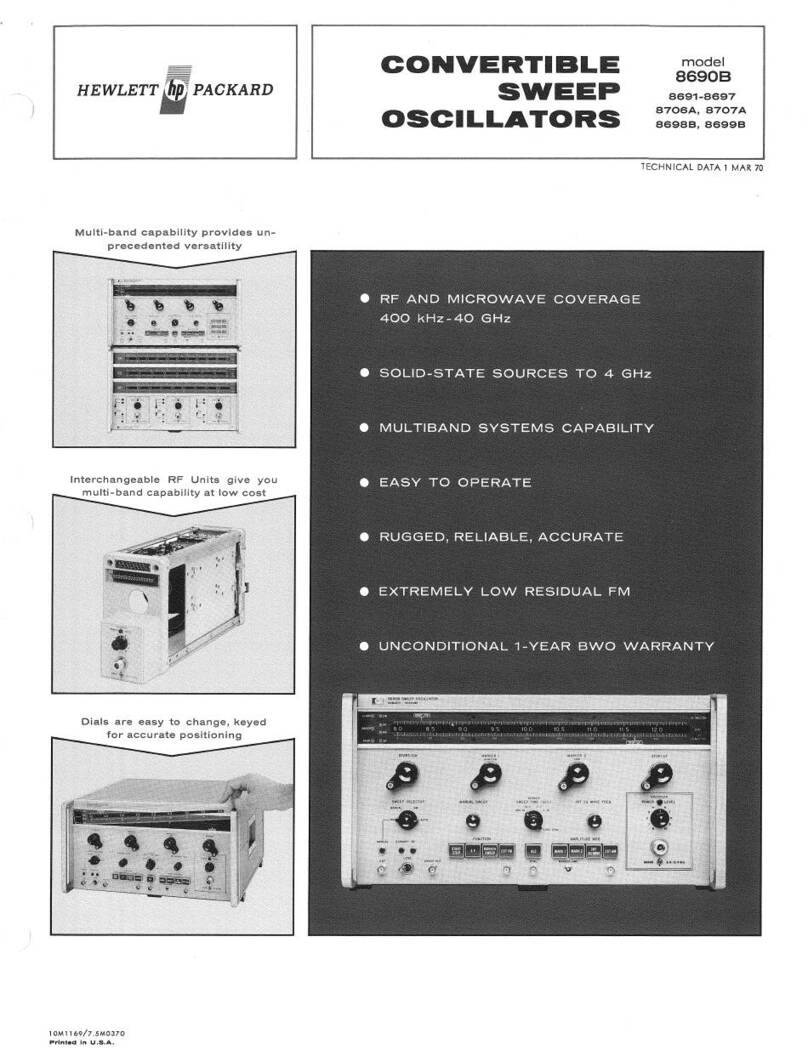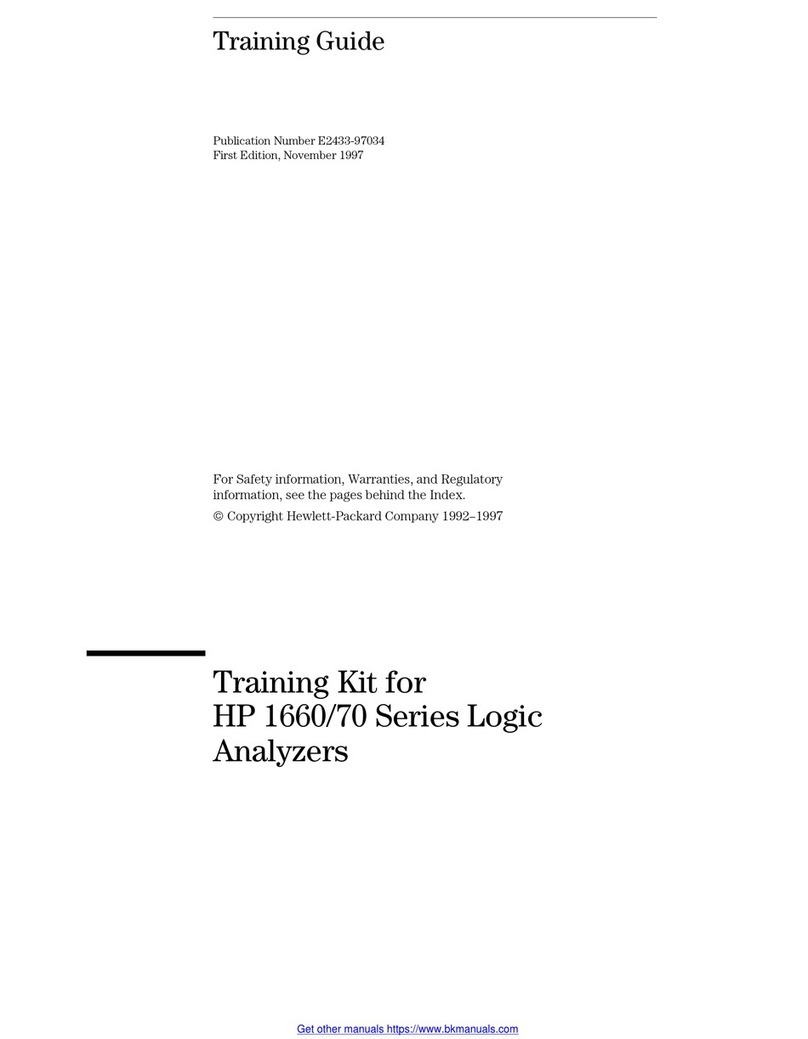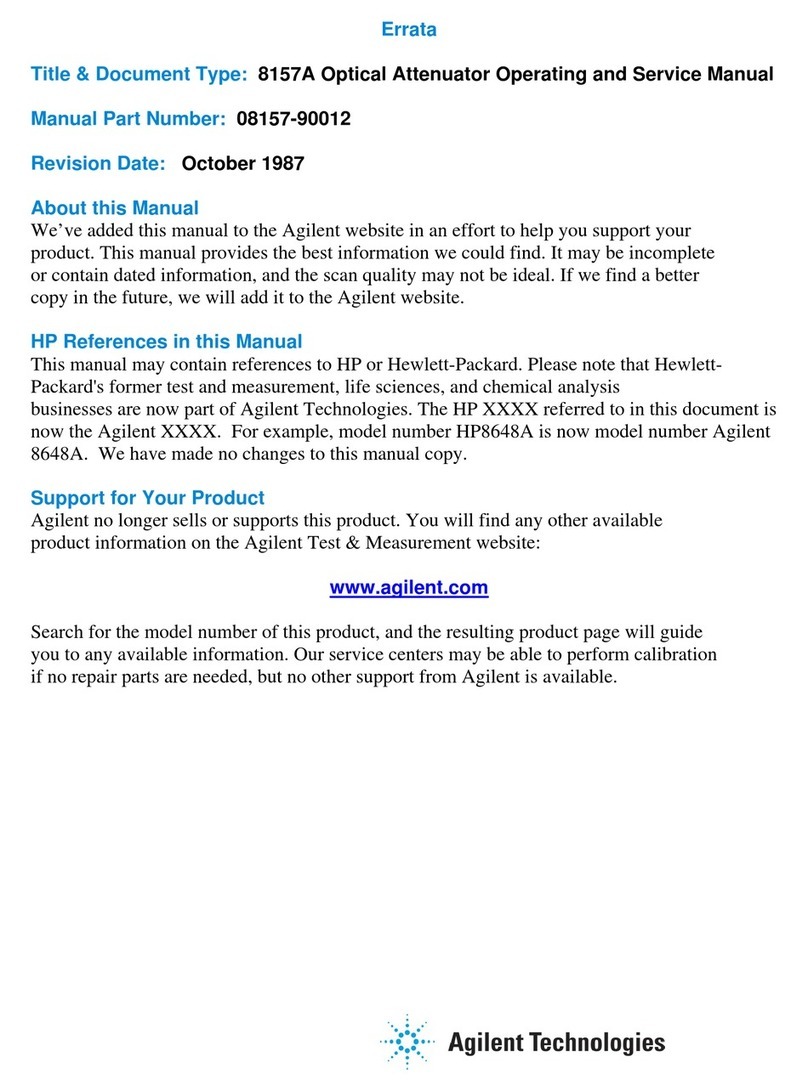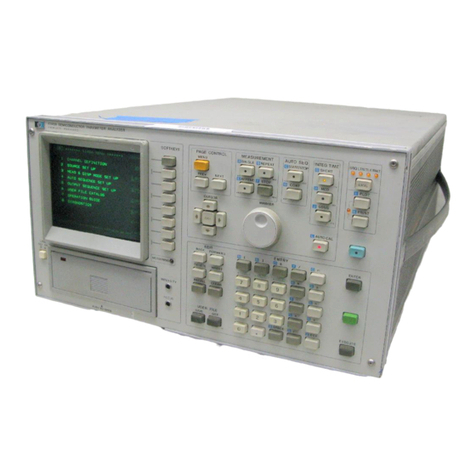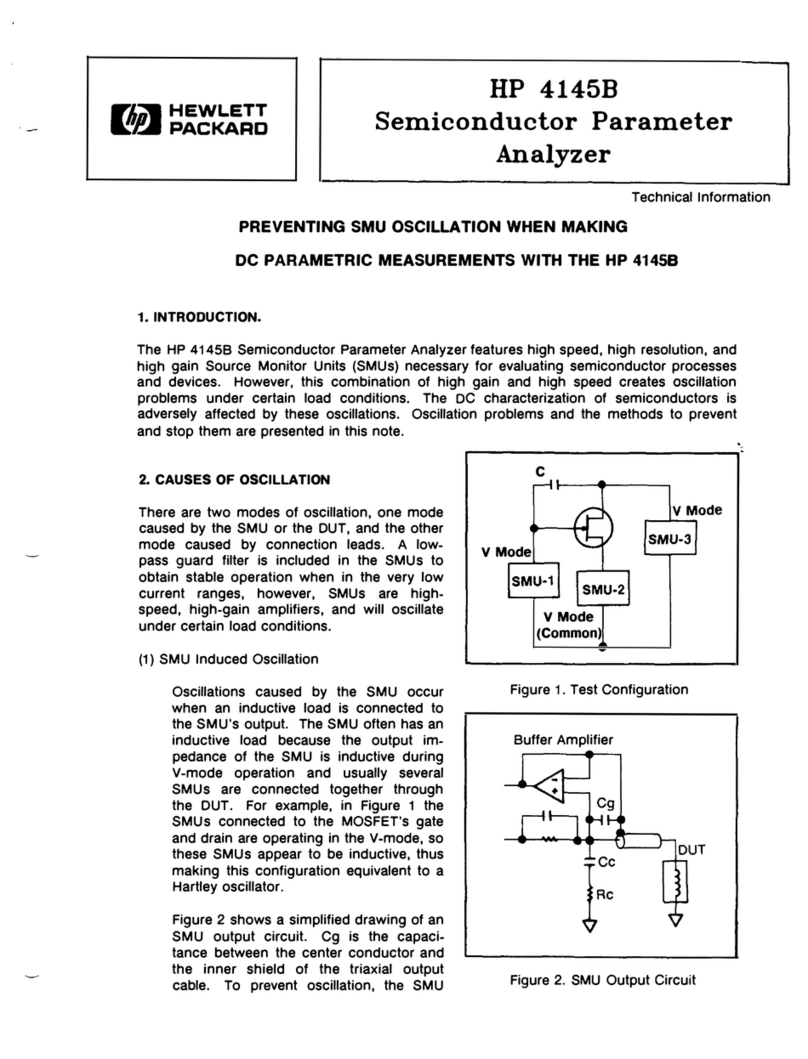
General Information
This chapter lists the accessories, the specifications and characteristics, and the
recommended test equipment.
Accessories
The following accessories are supplied with the HP 16555A/D Logic Analyzer.
Accessories Supplied HP Part Number
Probe Tip Assembly, Qty 4 01650-61608
Grabbers, Qty 4 packages 5090-4356
Extra Probe Leads, Qty 1 package 5959-9333
Extra Probe Grounds, Qty 4 packages 5959-9334
Probe Cables, Qty 2 16555-61606
Probe Cable and Pod Labels, Qty 1 01650-94310
Double Probe Adapter, Qty 1 16542-61607
Ferrite Core Assembly, Qty 2 16555-60001
Accessories Available
The accessories available for the HP 16555A/D are listed in the Accessories for HP Logic
Analyzers brochure.
Operating System
With HP 16500B Mainframe
The HP 16555D Logic Analyzer requires operating system version v3.10 or higher.
For the HP 16555A, the version of the operating system software depends on the
programmable logic device that is the CPU interface. To verify the version of the
programmable device, first locate the device, which is at the front of the HP 16555A board. If
the programmable device has part number 16555-80001, then the device requires operating
system version v2.xx, and the maximum state acquisition speed is 100 MHz. If the device has
part number 16555-80002 or higher, then the device requires operating system v3.00 or
higher, and the maximum state acquisition speed is 110 MHz for single-clock, single-edge
clocking mode. You should always use the latest release, and must use version numbers that
are compatible with your device.
With HP 16500C Mainframe
The HP 16555A/D Logic Analyzer requires operating system version v1.00 or higher.
1–2
